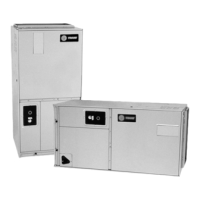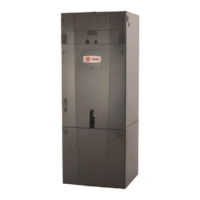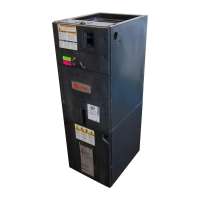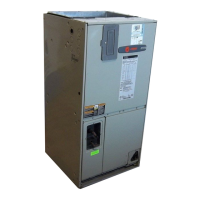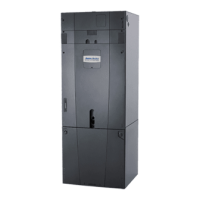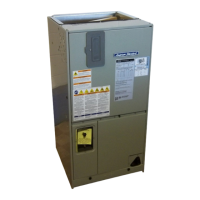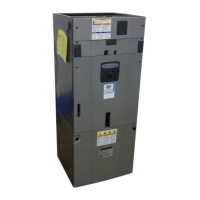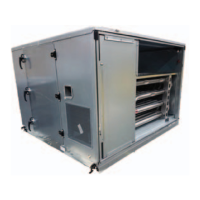Installation
RT-SVX35H-EN 35
Note: Gas pressure in excess of 14" w.c. or 0.5 psig will
damage the gas train.
Failure to use a pressure regulating device will result in
incorrect gas pressure. This can cause erratic operation
due to gas pressure fluctuations as well as damage the gas
valve. Over sizing the regulator will cause irregular
pulsating flame patterns, burner rumble, potential flame
outages, and possible
gas valve damage.
If a single pressure regulator serves more than one rooftop
unit, it must be sized to ensure that the inlet gas pressure
does not fall below 7" w.c. with all the furnaces operating
at full capacity. The gas pressure must not exceed 14" w.c.
when the furnaces are off.
7. Provide adequate support for all field installed gas
piping to avoid stressing the gas train and controls.
8. Leak test the gas supply line using a soap-and-water
so
lution or equivalent before connecting it to the gas
train.
9. Check the supply pressure before connecting it to the
unit to prevent possible gas valve damage and the
unsafe operating conditions that will result.
Note: Do not rely on the gas train shutoff valves to isolate
the unit while conducting gas pressure/leak test.
These valves are not designed
to withstand
p
ressures in excess of 14" w.c. or 0.5 psig.
WARNING
Hazard of Explosion!
Never use an open flame to detect gas leaks. It could
result in an explosion. Use a leak test solution for leak
testing. Failure to follow recommended safe leak test
procedures could result in death or serious injury or
equipment or property-only-damage.
Table 6. Sizing natural gas pipe mains & branches
Gas Supply Pipe
Run (ft)
Gas Input (Cubic Feet/Hour)
(a)
1-1/4” Pipe 1-1/2” Pipe 2” Pipe 2-1/2” Pipe 3” Pipe 4” Pipe
10 1050 1600 3050 4800 8500 17500
20 730 1100 2100 3300 5900 12000
30 590 890 1650 2700 4700 9700
40 500 760 1450 2300 4100 8300
50 440 670 1270 2000 3600 7400
60 400 610 1150 1850 3250 6800
70 370 560 1050 1700 3000 6200
80 350 530 990 1600 2800 5800
90 320 490 930 1500 2600 5400
100 305 460 870 1400 2500 5100
125 275 410 780 1250 2200 4500
150 250 380 710 1130 2000 4100
175 225 350 650 1050 1850 3800
200 210 320 610 980 1700 3500
Notes:
1. If more than one unit is served by the same main gas supply, consider the total gas input (cubic feet/hr.) and the total length when determining the
appropriate gas pipe size.
2. Obtain the Specific Gravity and BTU/Cu.Ft. from the gas company.
3. The following example demonstrates the considerations necessary when determining the actual pipe size.
Example: A 40' pipe run is needed to connect a unit with a 500 MBH furnace to a natural gas supply having a rating of 1,000
BTU/Cu.Ft. and a specific gravity of 0.60
Cu.Ft/Hour = Furnace MBH Input
Gas BTU/Cu.Ft. X Multiplier (Table 6, p. 30)
Cu.Ft/Hour = 500
Table 6, p. 30 indicates that a 1-1/4" pipe is required.
(a) Table is based on a specific gravity of 0.60. Use Table 3-1 for the specific gravity of the local gas supply.
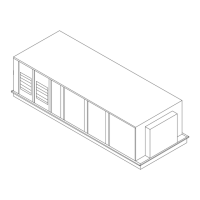
